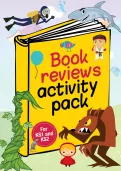Important update from TheSchoolRun
For the past 13 years, TheSchoolRun has been run by a small team of mums working from home, dedicated to providing quality educational resources to primary school parents. Unfortunately, rising supplier costs and falling revenue have made it impossible for us to continue operating, and we’ve had to make the difficult decision to close. The good news: We’ve arranged for another educational provider to take over many of our resources. These will be hosted on a new portal, where the content will be updated and expanded to support your child’s learning.
What this means for subscribers:
- Your subscription is still active, and for now, you can keep using the website as normal — just log in with your usual details to access all our articles and resources*.
- In a few months, all resources will move to the new portal. You’ll continue to have access there until your subscription ends. We’ll send you full details nearer the time.
- As a thank you for your support, we’ll also be sending you 16 primary school eBooks (worth £108.84) to download and keep.
A few changes to be aware of:
- The Learning Journey weekly email has ended, but your child’s plan will still be updated on your dashboard each Monday. Just log in to see the recommended worksheets.
- The 11+ weekly emails have now ended. We sent you all the remaining emails in the series at the end of March — please check your inbox (and spam folder) if you haven’t seen them. You can also follow the full programme here: 11+ Learning Journey.
If you have any questions, please contact us at [email protected]. Thank you for being part of our journey it’s been a privilege to support your family’s learning.
*If you need to reset your password, it will still work as usual. Please check your spam folder if the reset email doesn’t appear in your inbox.
How to create a reading-friendly home

Creating a welcome reading environment doesn’t mean turning your home into a library! Small changes can make a big difference to how your child views reading, and help them develop a love of books. For instance:
- Every day, ask your child to tell you about one interesting thing they’ve read.
- Make scrapbooks or storybooks with your child (to remind them of a holiday or outing you’ve been on, say).


Claim A FREE Book Reviews Activity Pack!
- A huge collection of creative writing & reading comprehension resources
- Explore texts, deepen understanding, share opinions
- For Year 1 to Year 6
- Openly read in front of your child – explain in ‘child-speak’ what you are reading about, whether you are enjoying it, etc.
- Have plenty of books on topics they are interested in available around the house (raid your local library’s children’s non-fiction shelves).
When you’re looking at books together, educational psychologist Priya Dhingra recommends these practical tips for great reading sessions:
- Find somewhere quiet to read, away from distractions.
- Choose a regular time to read – this could be after snack time in the evening, after dinner or before bedtime.
- If your child starts to get frustrated, try again the next day.
- Stop while your child is eager to continue. Motivation is soon lost with long periods of the same activity.
- Before beginning to read, spend some time looking at the pictures and discuss what the story might be about. Ask your child what key words might be found inside the book.
- When you do start reading a book together, begin by reading out loud, matching the speed of your child.
- Encourage your child to point to the words as they read to you. It is important to choose a book where your child can read at least 75% of the words in the book.
- When you’re reading together and an error occurs, correct it immediately – have your child repeat the correction, and then continue reading together.
- As your child experiences success and their confidence grows, encourage them on to the next reading step – reading alone.
- Ask questions to encourage your child to think about the book or pictures in the book. At natural stopping points, talk with your child about the meaning of the text – what’s happening, or what’s been learned. Encourage your child to comment or ask questions.
- Ensure that the whole process is positive by praising your child in specific terms for good reading. For example, “That was a hard word. You did a good job sounding it out!” Consider a reward system such as stickers for every page read well.
- Understand what phonics and sounds are so you can help your child as they sound out new words. For more ideas on getting the most out of reading with kids, find out how you can bring books to life and help your child develop a love for reading.








